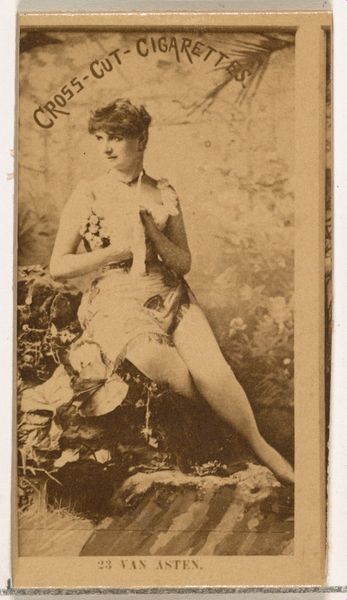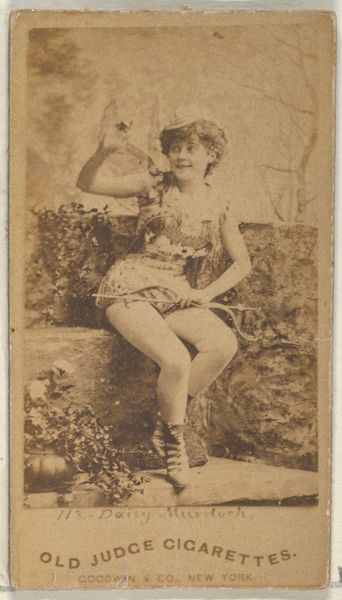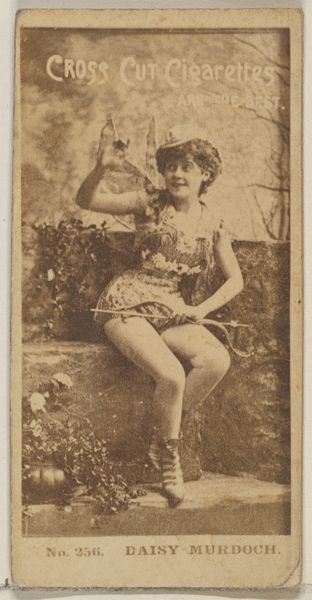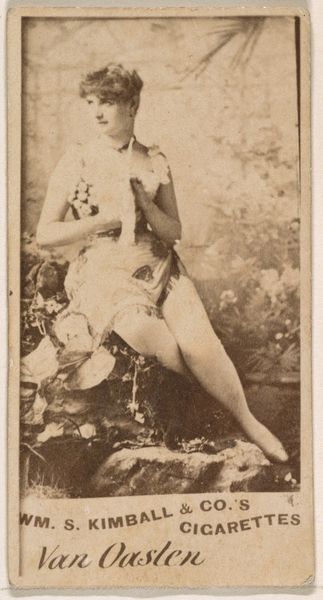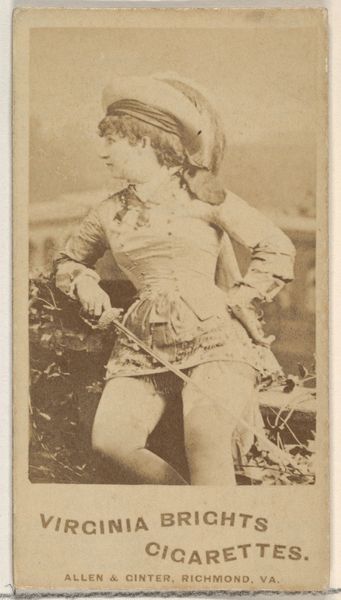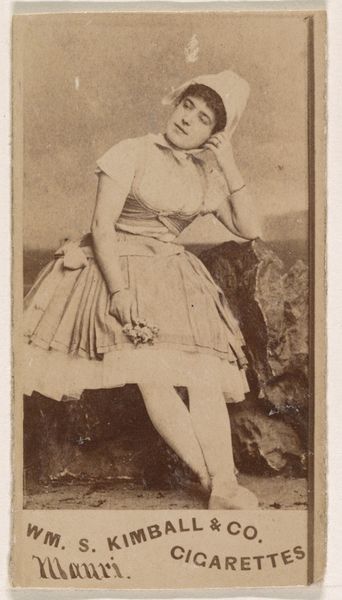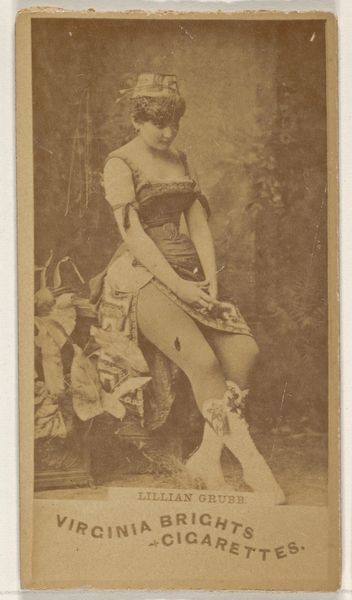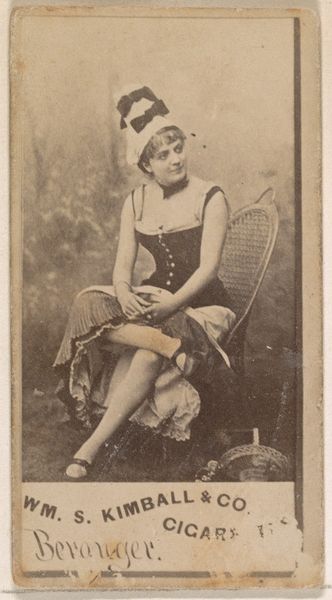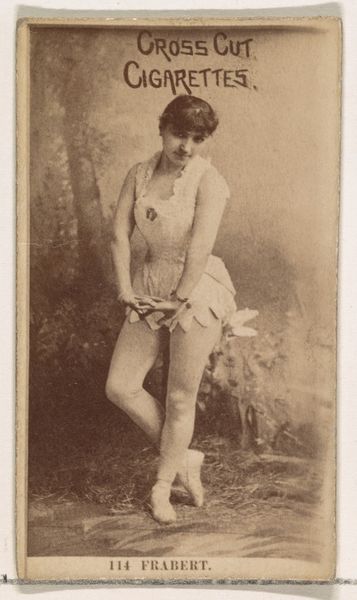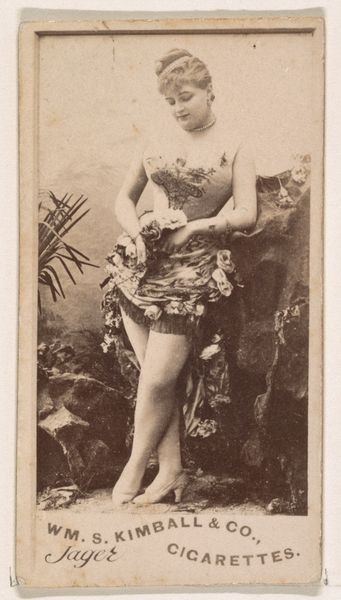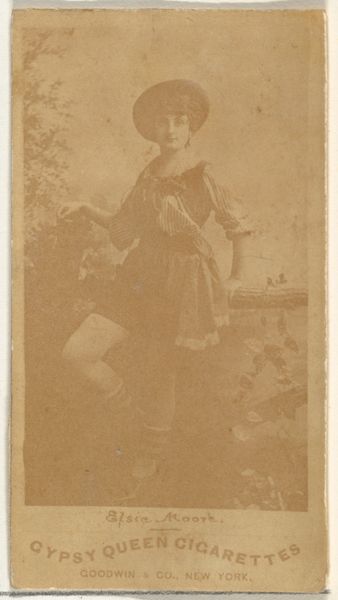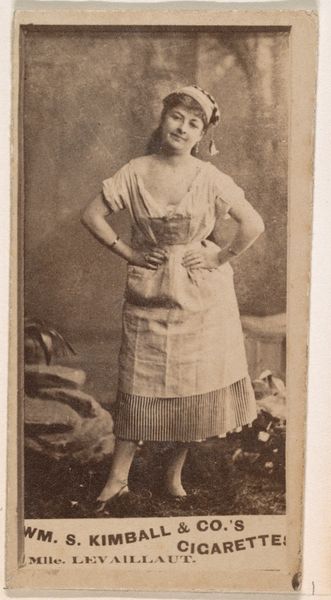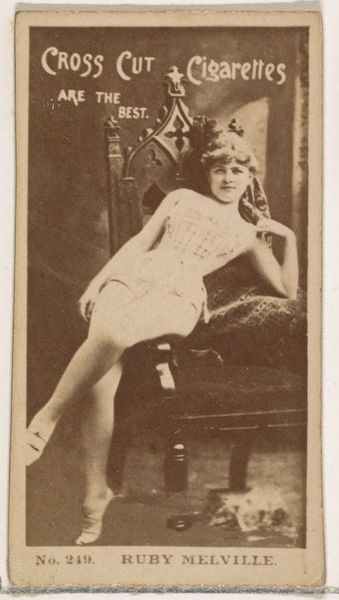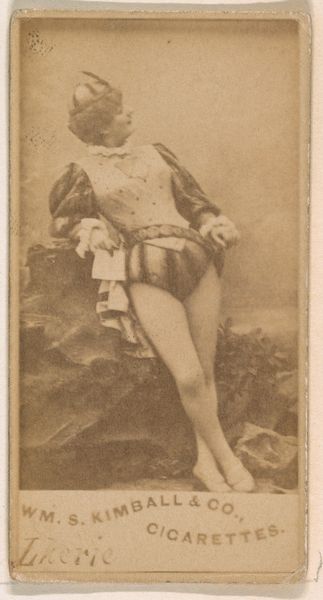
Card Number 224, Miss Myerha, from the Actors and Actresses series (N145-2) issued by Duke Sons & Co. to promote Cross Cut Cigarettes 1880s
0:00
0:00
drawing, print, photography
#
portrait
#
drawing
# print
#
figuration
#
photography
Dimensions: Sheet: 2 5/8 × 1 7/16 in. (6.6 × 3.7 cm)
Copyright: Public Domain
Curator: Let’s consider this card, “Card Number 224, Miss Myerha,” part of the Actors and Actresses series made in the 1880s by W. Duke, Sons & Co. to promote Cross Cut Cigarettes. Editor: Well, my immediate impression is of its unsettling effect; that direct gaze coupled with her unusual, rather athletic pose. And it seems surprisingly forward for the era. Curator: Precisely! What's key is the intersection of image, commerce, and the burgeoning celebrity culture of the late 19th century. These cards functioned within a network of desires and aspirational ideals linked directly to consumption. This is not high art but very much tied to the capitalist framework of the era, reflecting societal views on women in entertainment. Editor: So, Miss Myerha, whoever she was, becomes both an individual and a commodity in this lithograph, right? Placed in a context entirely of the maker's creation? The bathing costume and rocks suggest leisure and staged naturalness, and thus accessibility? The image normalizes cigarette consumption and links it to attractiveness and celebrity. Curator: The card circulated widely, predominantly among a male consumer base, establishing Miss Myerha and, more broadly, the actress as objects of admiration—and desire. How can we tease out that subtle complexity regarding gender? She's posing, actively engaging with the viewer's gaze. Does that grant her agency, or does it cement her status as an object? Editor: Perhaps it’s a bit of both. This moment seems rife with the anxieties regarding performance, authenticity, and commodification inherent in celebrity culture. We need to be attentive to her race and background too and how that might influence its circulation, but as an artifact of American industry, it demonstrates so much of how public figures helped promote mass produced and popular culture. Curator: These trading cards offer us a rich and detailed picture of a society undergoing a huge cultural shift. Hopefully this nuanced exploration helped listeners understand how a small cigarette card operates as a portal to late 19th century socio-political concerns and to question art historical narratives through diverse, critical lenses. Editor: I agree. These seemingly simple images hold up a mirror to a complicated moment in American cultural history, and highlight many dynamics we still navigate today.
Comments
No comments
Be the first to comment and join the conversation on the ultimate creative platform.
